The Pre ’98 Exotics
I’ve been singing the praises of the hatchback-type Japanese Kei Sports cars in the earlier posts (check out Part 1 and Part 2) about these vehicles on our blog here at Japan Car Direct, and, if my editor would let me, I’d continue on and on about how great these cars are. And I’d also go on and on about why, if you are seriously into light sports cars, you should equally seriously be considering importing a Kei Sports car yourself direct from Japan, as that is totally the best way to get a good, unthrashed and well-maintained unit.
One thing (of the many things) that pulls me toward the hatchbacks in the Kei Sports category is their practicality. And the fact that a hatchback Kei Sports car is practical (small on the outside for getting into and out of tight spots, big on the inside for carrying luggage and people) is one thing that kept me in my Kei Sports car for eight and a half years of practical, and fun (and cheap) motoring.
But let’s do something crazy here. Let’s leave practical behind in our look at Japanese Kei sports cars and let’s look at two exotic Keis: The Honda Beat and the Suzuki Cappuccino.
Honda Beat
Taking a friend’s bright yellow Honda Beat for a spin around the Japanese countryside in the summer will always stay with me as a happy motoring memory. Sunny day, top down, winding roads through hills and forests: A simple, fresh pleasure, and the Beat was the perfect car for it, with its simple, fresh design.
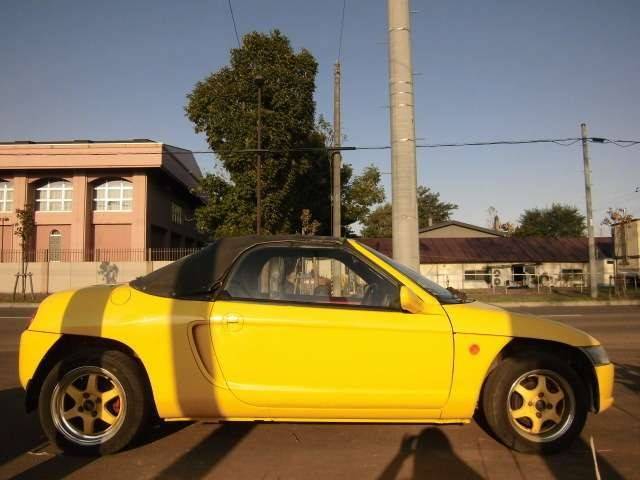
The Honda Beat is based on a design by the Italian design house Pininfarina, and, typically of so many Italian car designs, looks really nice. It’s a beautiful little car. Honda bought the design and built the car from 1991 to 1996. It was the last car that Soichiro Honda himself was personally involved it and it certainly reflects his boldness, uniqueness, and ability to step outside the box; and, if I am not mistaken, the Honda Beat was the world’s first mid-engine, soft-top roadster. (The American Society of Mechanical Engineers, ASME, has a good little bio of Honda here, although it does not include may favorite story of him using the shop fire hose to chase away a pair of tax collectors not long after the war.)
When checking out the car, when driving it, even when just sitting in it, you definitely note both the build quality and the simplicity. The pureness of line and shape you see in the exterior is reflected in the clean, uncluttered layout of the interior.
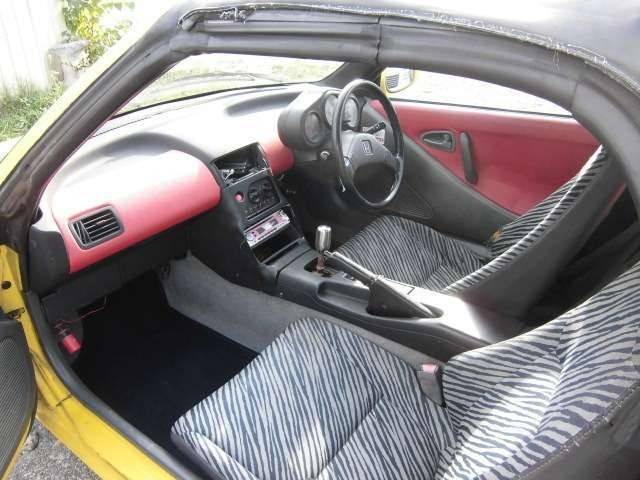
Driving the car was such a pleasure and joy that it made me laugh out loud for the sheer fun of it. The controls are all easy to hand, the seat provides good support and yet it does not feel cramped. Indeed, for such a small car, there was no feeling for me of being cramped or boxed in, and I am not a small guy. Handling is very precise, with non-power assisted steering; something the sports car purist often insists on, and rightly so.
The small 660cc engine is highly tuned and revs happily to its 8,500rpm redline.
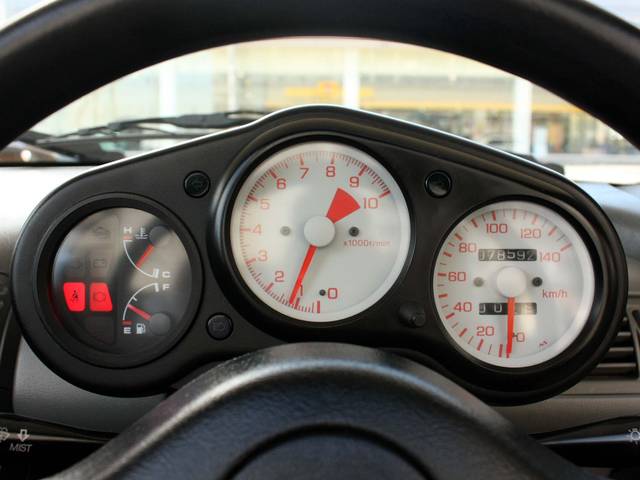
Amazingly, for a non-turbo, non-vvt engine, it is putting out nearly 100 hp per liter and is rated at 64ps (63hp), which is the maximum allowed in the Japanese Kei class of cars. The engine has a fair tuning potential and many Japanese Beat owners tune these little economic three cylinder engines to well over the stock power rating. (Getting 63hp out of 656ccs while using 10:1 compression, regular gas and no variable valve timing is cracking good for an N/A engine, if you ask me. Honda, of course, took the record for specific power output for a non-turbo engine, as you’ll see on Wiki here, but it took hi-octane gas, VVT, and 11.7:1 compression to do it.)
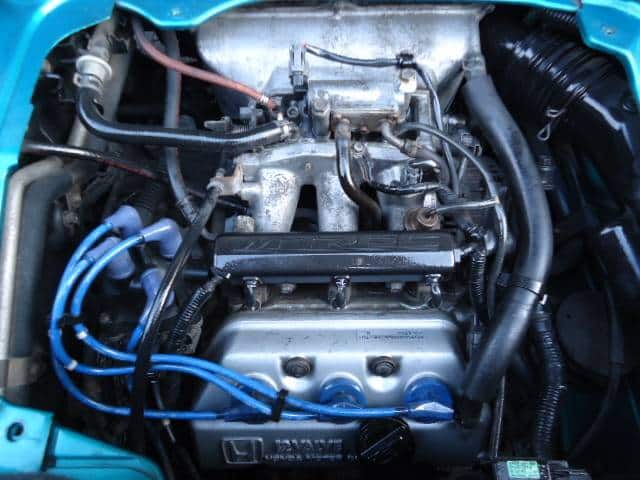
The car has a devoted following in Japan among those who like their fun mixed with beauty and their beauty mixed with fun.
The downsides of this car are the same downsides as for most small roadsters: Boot space is limited (very limited in the case of the Beat), and the car is not a straight line speed demon. Pure roadsters, from the MGB to the Lotus Elan to the Alfa Romeo Spider Veloce, were never meant to beat a Lamborghini Countach in a 0-60 drag, and the Honda Beat won’t do it either. (But I have a suspicion that the Beat will out maneuver the Countach on a twisty back road. That would be a fine comparison, indeed!)
The Honda Beat is another one of the free-spirited designs that we so often find in the Japanese Kei car class. It’s a simple, well-built car targeted at pure motoring fun; the types of cars that are no longer being made today by heavily-regulated and mass-market focused automakers. I long for those past days of care-free joy and delight in car design, and for those simple well-made cars that were built to last. Those days may never come back, but cars like the Honda Beat were so well made that many many are on the roads in Japan today and are available to our customers overseas in countries like the USA (where they clear the 25 year rule), the UK, Canada, Australia, and countries of the European Union.
If you are interested in buying a Honda Beat and shipping it direct from Japan, we at Japan Car Direct can easily find a good one for you. They were so well made that there are still many fine ones to choose from, and you can expect a Beat, with its high build quality, to give you many years and many miles of the pure motoring joy it was designed for.
I’ll never forget that happy summer day driving my friend’s Honda Beat, and while cars like this may not ever be made again, at least we can still find nice ones second hand in Japan, and sunny summer days will always be there for us.
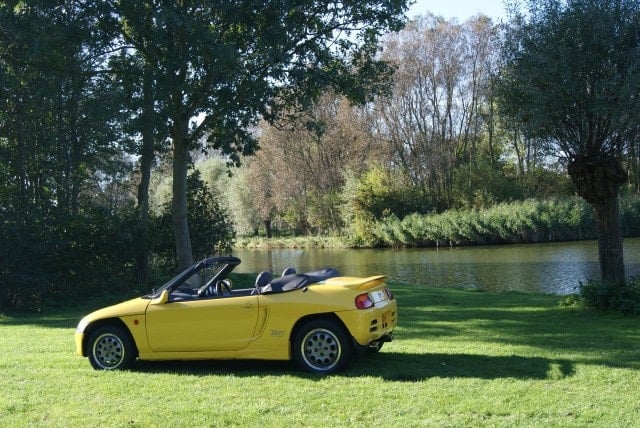
The next “exotic” in the Japanese Kei Sports class that I have driven and enjoyed is the Suzuki Cappuccino.
The Suzuki Cappuccino
Talking here about Kei Sports cars, and about the Cappuccino in particular, I’ll say flat out that the Suzuki Cappuccino is a delight. A delight to drive; a delight to look at; a delight just to sit in.

Test driving a friend’s Cappuccino recently, my wife’s first comment on getting into the car was: “This interior is so Italian!”
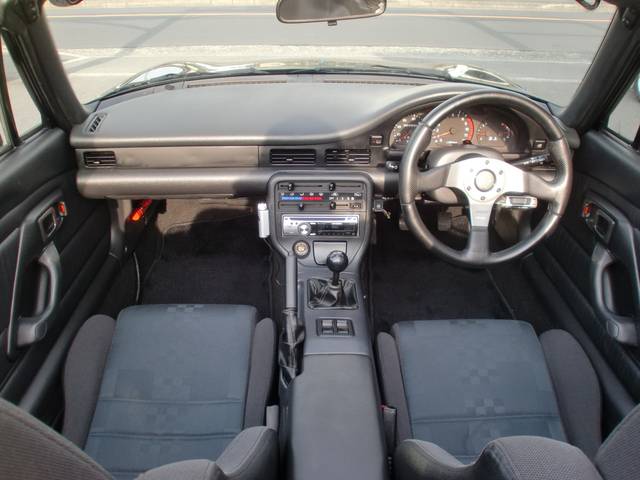
And I could immediately see what she was getting at, as it did remind me of the interior of the Lancia Delta Integrale and some other classic Italian sporting machines of the ‘80s and early ‘90s.
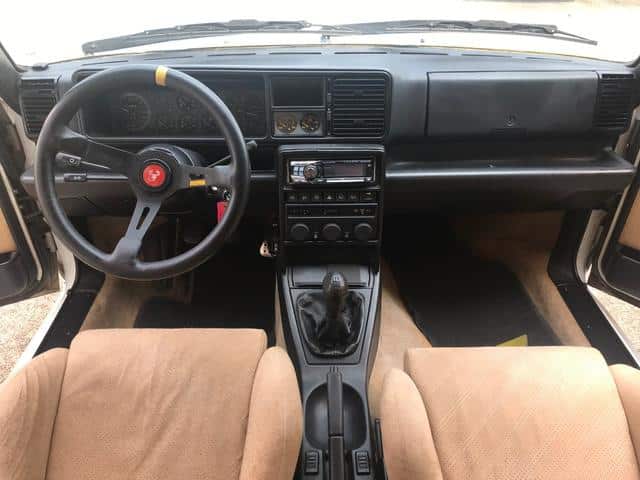
And driving the car is truly a pick-me-up, and even better by far than a cup of strong Italian coffee. Steering is sharp, responsive, super precise. It’s non-power steering, of course; no need to even mention that really, as this is a pure sports car for pure sports car lovers. It’s got it all: light (700kgs / 1540lbs), fully top down when you want, front mid engine with good power and, rear wheel drive.
If you want something to give you a size comparison with the Cappuccino, look no farther than that classic of classics of the small, open-topped sports car: The MG Midget.
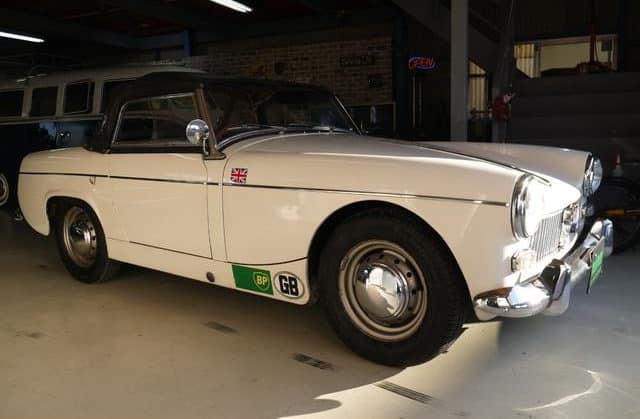
The Cappuccino is about an inch wider (23mm) and seven inches (185mm) shorter than the original Mk-I Midget.
This next photo shows how the Cappuccino’s engine is set back of the front axle line. (Note that my buddy’s car in this photo has a number of mods, so you’re not looking at a completely stock engine here.)
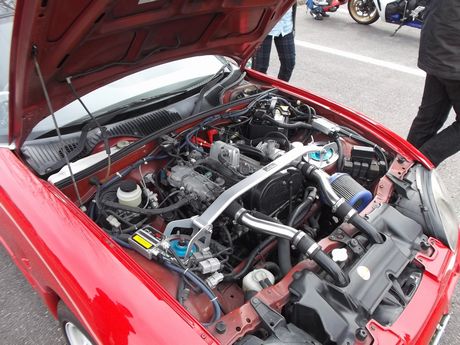
Here’s another Cappuccino with the top down.

The Cappuccino is a pure sports car and it gives you what the pure sports car should give you: fun and more fun and cheap to run.
Using the top spec version of Suzuki’s in-line three, DOHC 12-valve turbo inter cooled iron block F6A (or aluminum block K6A in the later models) as found in the Alto Works, the car is quick in stock form and very tunable. There are also many suspension and handling upgrades. This car is a favorite with tuners in Japan, and I’ve seen some pretty hot ones on the roads here.
Driving the car, I can say that the cockpit is tight but not overly so, with the controls all well laid out and well positioned. You feel like you are sitting in a small combat fighter ready for a twisting, turning dogfight. Balance at cornering is excellent and the car feels assured and well positioned.
My only slight complaint is that I did note some turbo boost lag on the stock cars I have driven. (These had the F6A, and I cannot speak from personal experience about the feeling of the later K6A.) My buddy’s modded Cappuccino had an aftermarket turbo and had no noticeable lag at all.
And while we’re on the topic of Cappuccino engines, I should point out that the later Cappuccinos come with the K6A aluminum block engine. This is also a DOHC 4-valve unit. A notable difference between the F6A and the K6A is that the latter engine has a timing chain, rather than a timing belt, and from what I understand, the K6A timing chain does not require replacement the way that the toothed rubber belt of the F6A does.
The power curves of the two engines are close, with max power coming in at 6,500rpm in both units. The torque curves are different, though: the F6A gives you its max torque of 8.7kg/m at 4,000rpm, whereas the more modern K6A gives you more torque, 10.5kg/m, and gives it to you earlier, at 3,500rpm. Transmission ratios and final drive gearing are the same in both earlier and later Cappuccinos. Oh yes, and having the K6A saves you ten kilos in weight; say about 22lbs. And (why is there always an “and” and I can never stop talking about the cars I love) the K6A was used in the Suzuki Jimny JB23 model, which had a very long (20 year) production run, so, as with the F6A, there were a LOT of these engines made.
The Cappuccino entered production in November of 1991 and the last of these mini exotics came off the line in October of 1998.
A nice point about this fully open roadster is that the top is not cloth, but rather a set of targa panels, so the easy exposure to casual vandalism that cloth top roadsters suffer from in some neighborhoods is not present with the Cappuccino. And unlike the Honda Beat, another of my favorite mini sports cars, the Cappuccino has a rather better boot / trunk. I’m not saying it’s big, mind you, just that it’s better than the little cubby-hole in the Beat. (My wife’s purse is better than the little cubby-hole in the Beat, for that matter.)
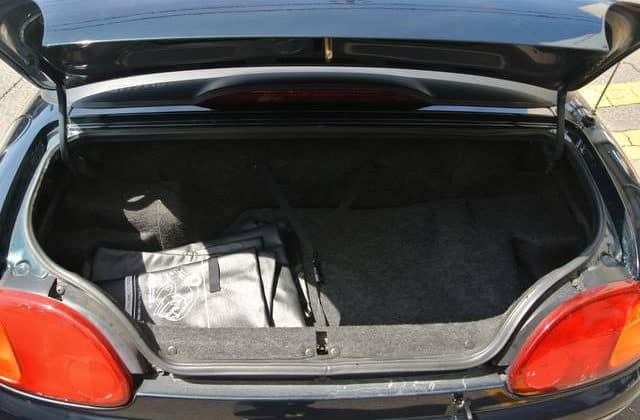
So if you’re looking to buy a Kei Sports car and you want to “go exotic” and not hatchback, then the Honda Beat or the Suzuki Cappuccino are cars that should be high on your list of export targets.
HANDLE WITH CARE
(Japanese Kei Exotics Are True Exotics.)
Now, having said that, let me inject a wee note of caution here. These ARE exotic cars. The beat is rear-mid-engine (think Countach) and the Cappuccino is front-mid-engine (think Lotus Seven). Handling at the limit can quickly transition to handling over the limit. Over the limit in a mid-engine car is territory for skilled drivers only. I know. I had a mid-ship car for five years, and I nearly spun it once when the road surface grip was less than I would have wanted (and it was a cold day so my tires were hard). I recovered, yes, but only just. My pride in my driving skill took a hit that day, but it was better than the car taking a hit. So you do need a higher level of skill than the average driver if your decide to buy a Cappuccino or a Beat.
And now, having said that, let me also say that the mid-engine layout and light weight of these Kei Sports cars means that they can easily, easily corner far faster than you will ever need to (or it will ever be safe to) on a normal, public road.
To get a bit of a sense of how these cars match up against other cars of the time, have a look at this video here by Best Motoring International. They compare the Beat and Cappuccino with an Alto Works, an NA series Miata, and a Daihatsu Lezza. (Don’t ask us to help you import a Lezza from Japan, you won’t find one; well….maybe we can find you one with an auto trans.)
Good Japanese Keis on the Way.
We are seeing good numbers of Honda Beats and Suzuki Cappuccinos coming up at the Japanese used car auctions and at the used car dealers. Nice ones. These cars, like most pure sports cars and exotics, attract the kind of owners that take care of their iron. It’s rare, indeed, from what I see on the roads here in Japan, to see a thrashed or neglected example of either of these cars. These are good bets to buy direct from Japan and export back home for yourself. Good value cars here, good value. At Japan Car Direct it will be our pleasure to set you up with one of these great little Kei Sports cars, with a Beat or a Cappuccino. When you import a clean, fresh example of one of these machines you will be set for true seat-of-the-pants motoring.
Now, I said in my last post about Japanese Kei Sports cars that I would tell you about the post October 1998 cars, but here I have gone on and on about these two pre ’98 Kei cars that I think are really great machines to have if you are into the whole light sports car thing. I just had to talk fully about them just because they are such good machines.
So, in my next post, we’ll finally get to looking at what comes out in the world of Japanese Kei Sports cars after 1998. Stay with me, all you light sports car fans.



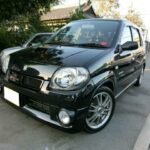




Leave your questions and comments, we look forward to replying!